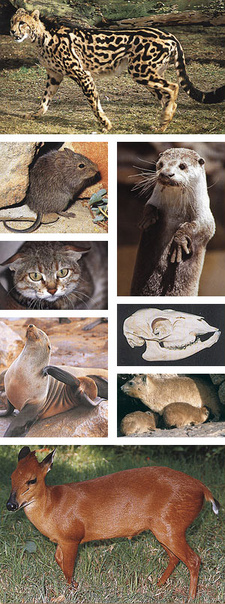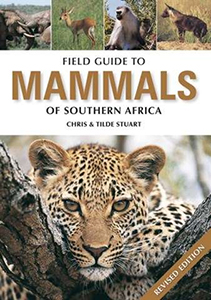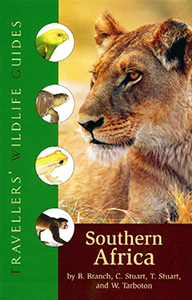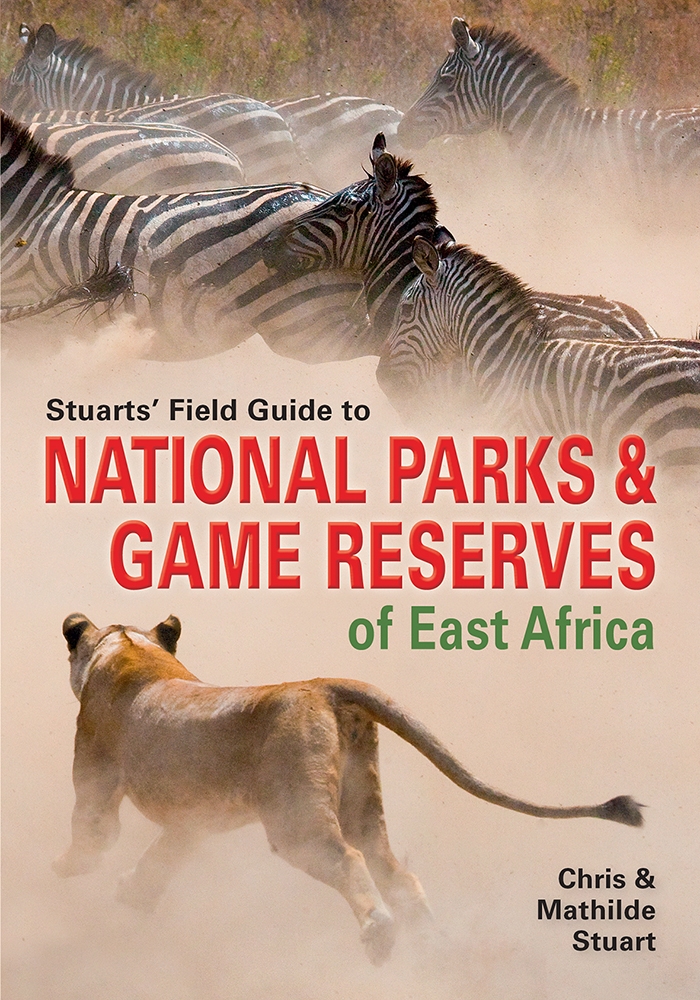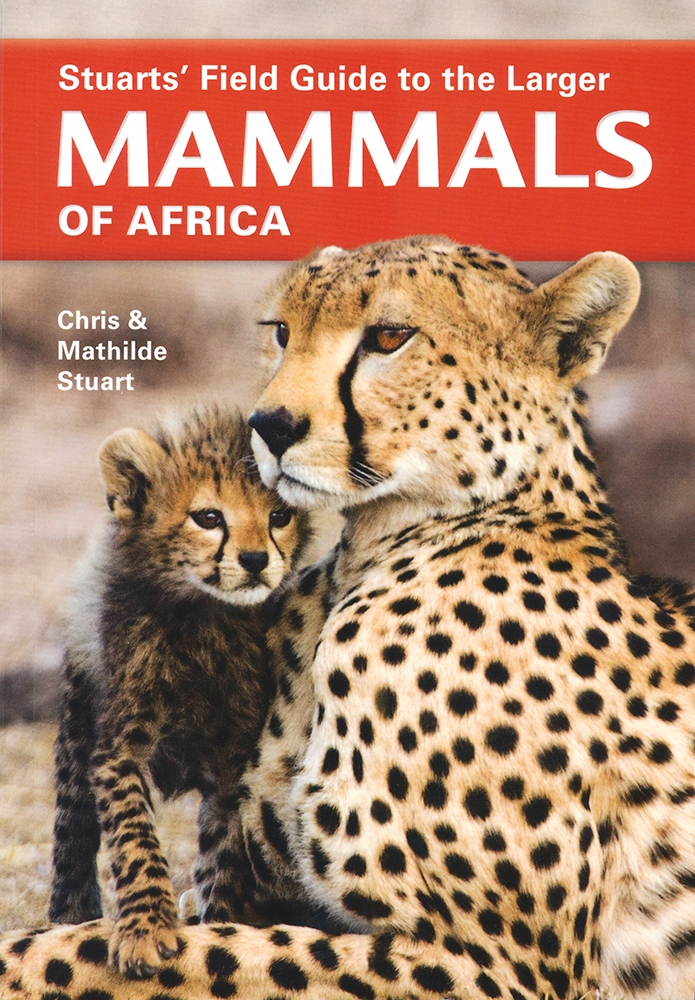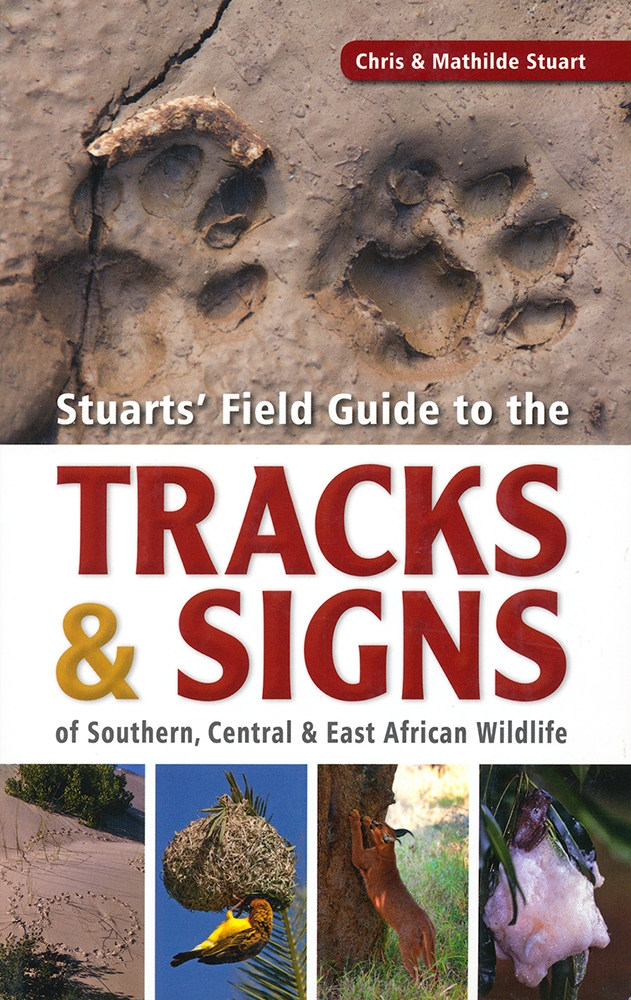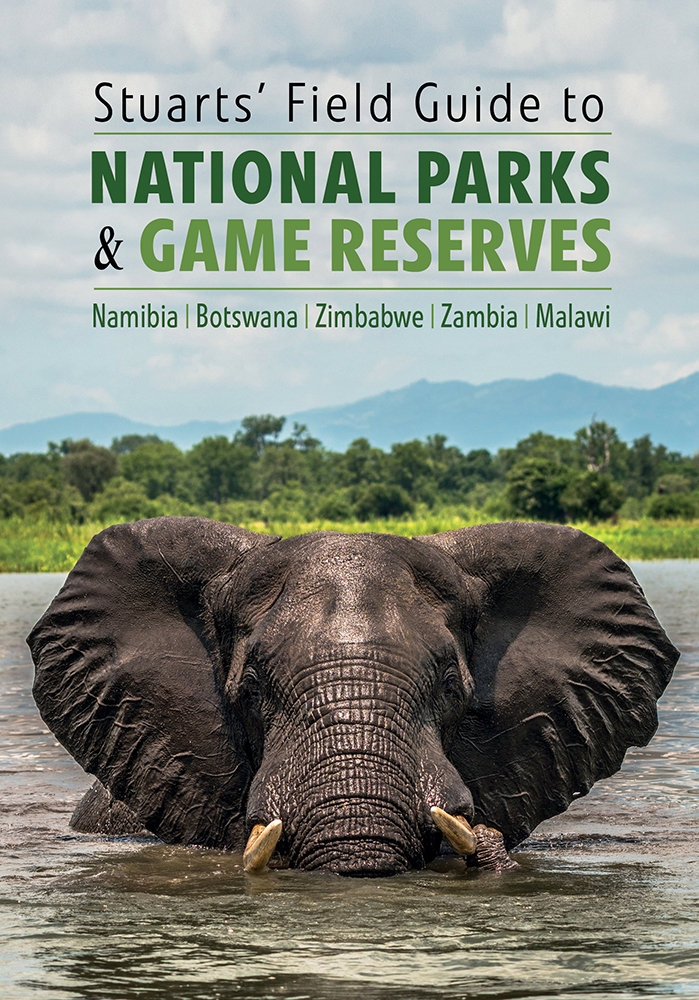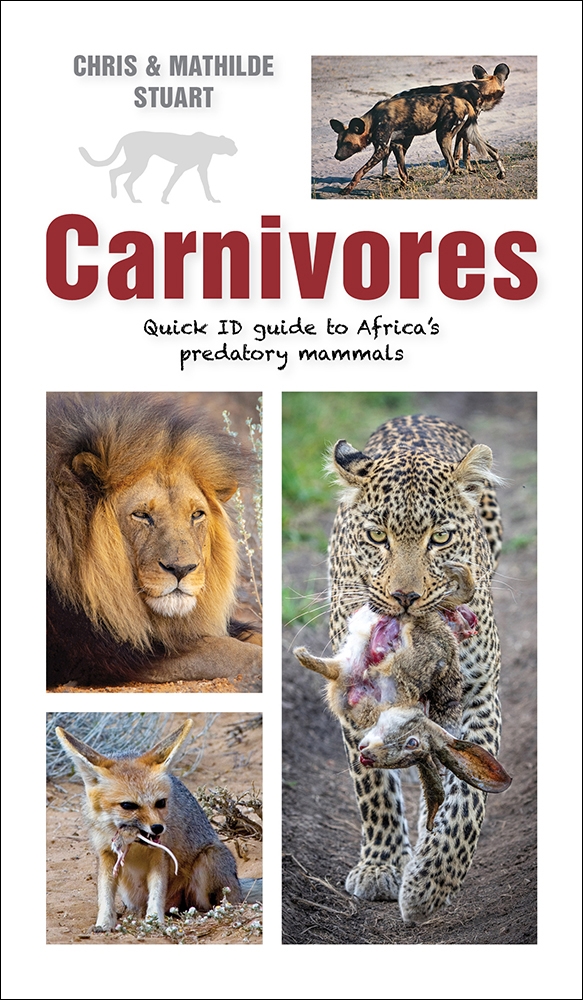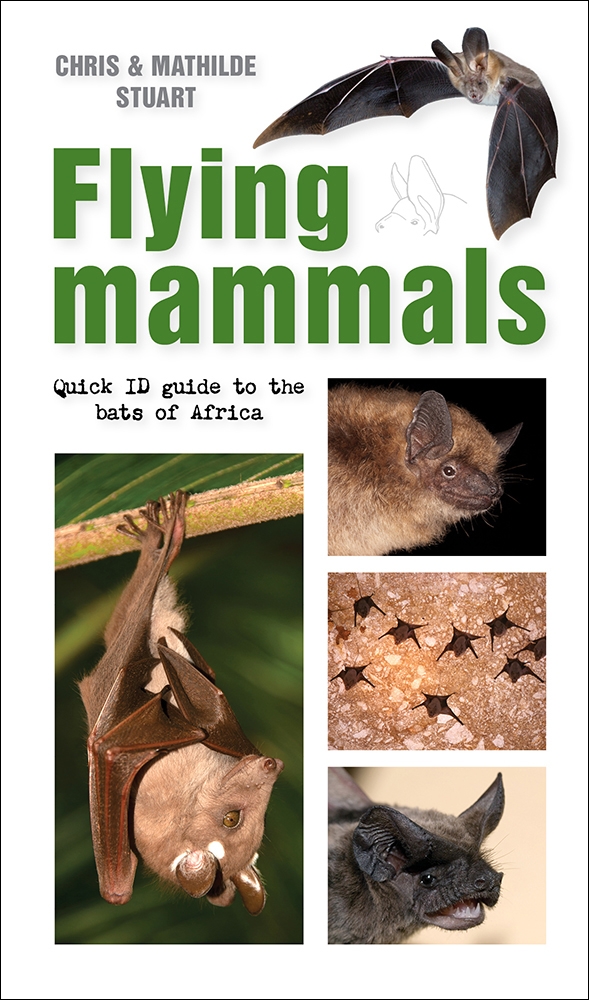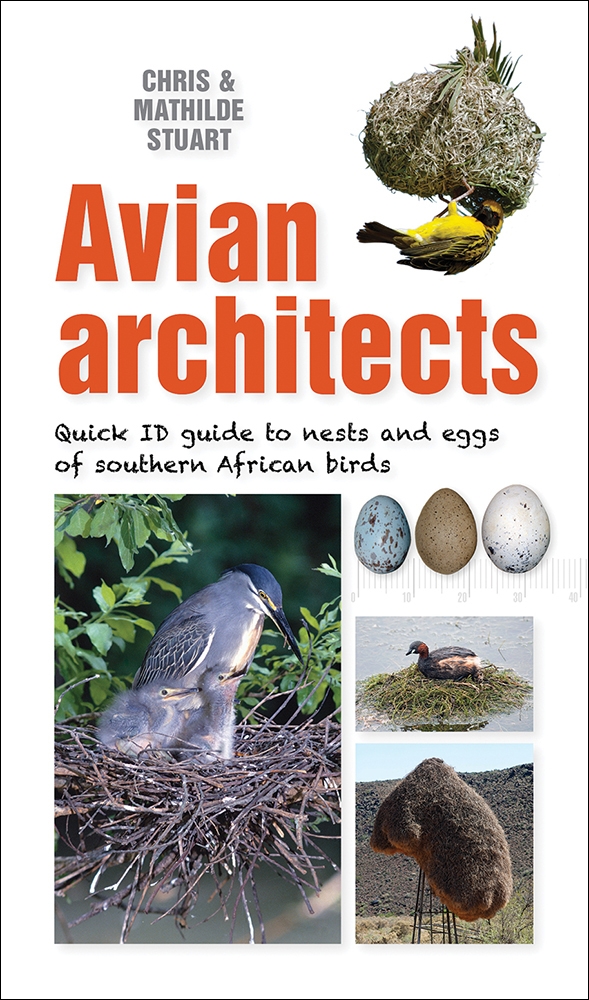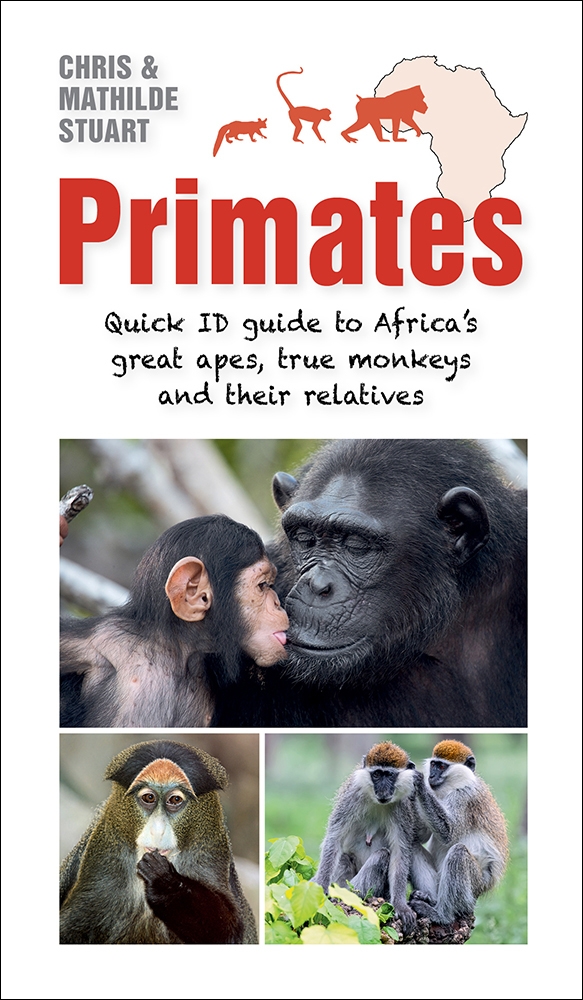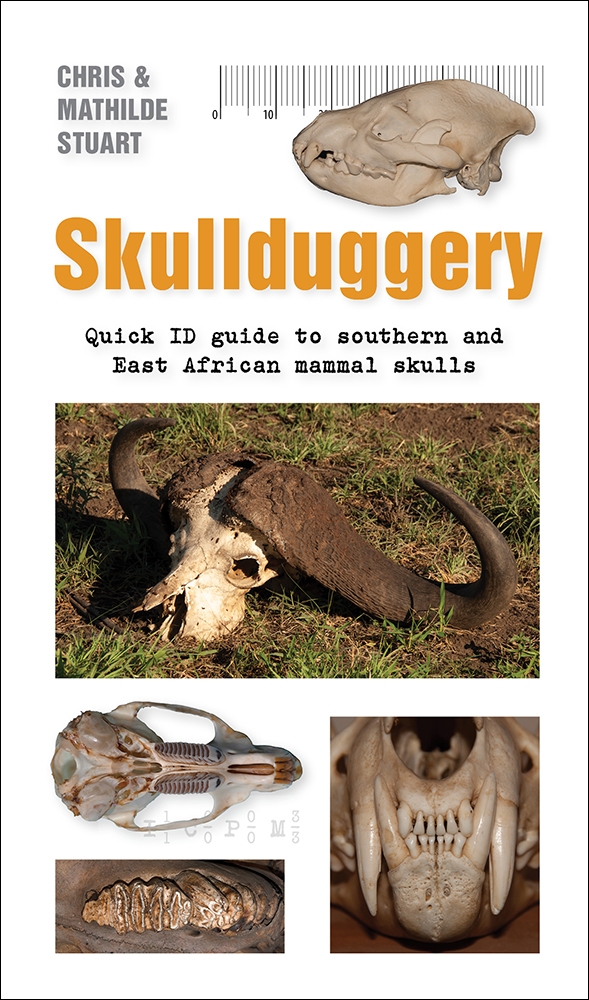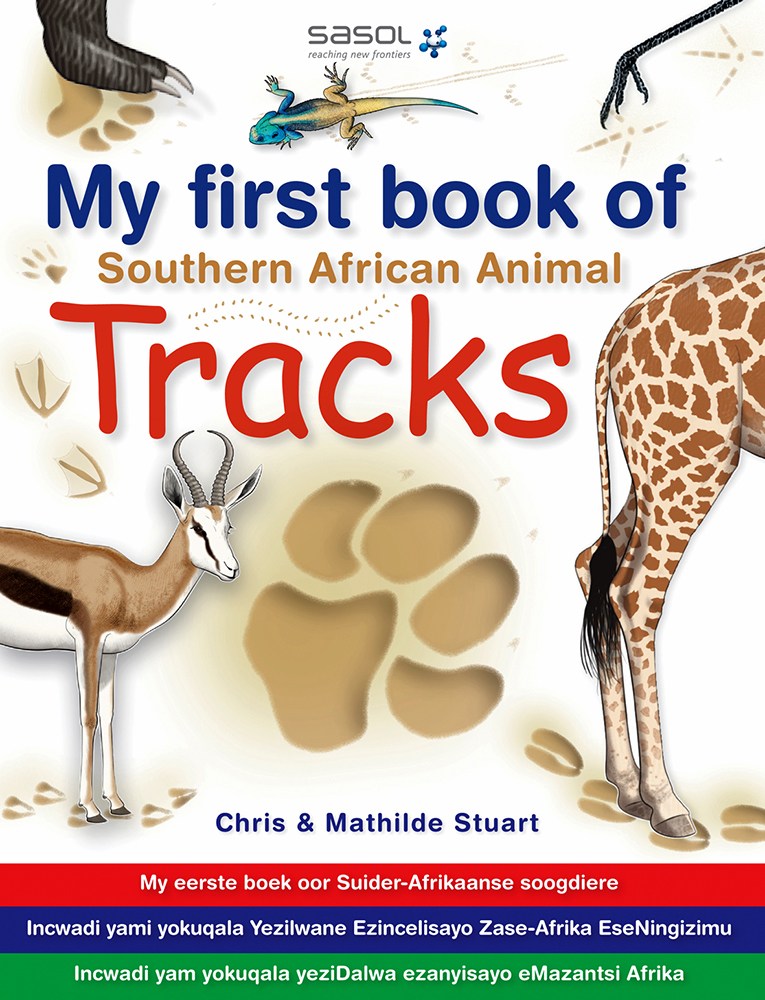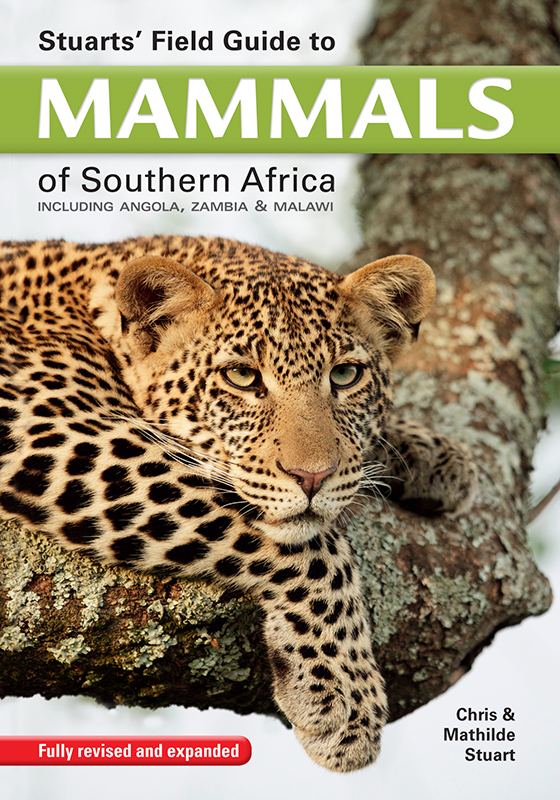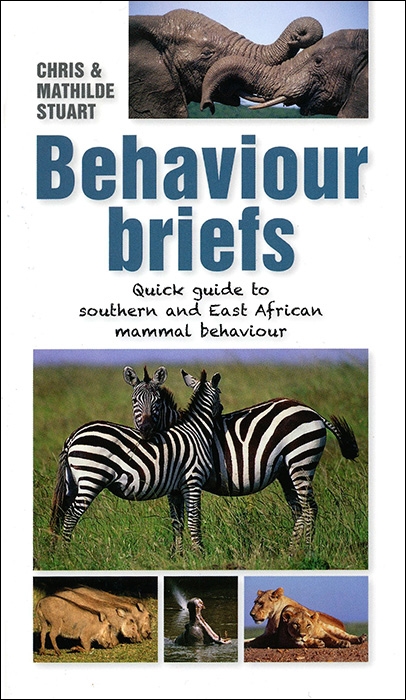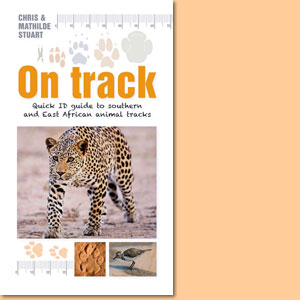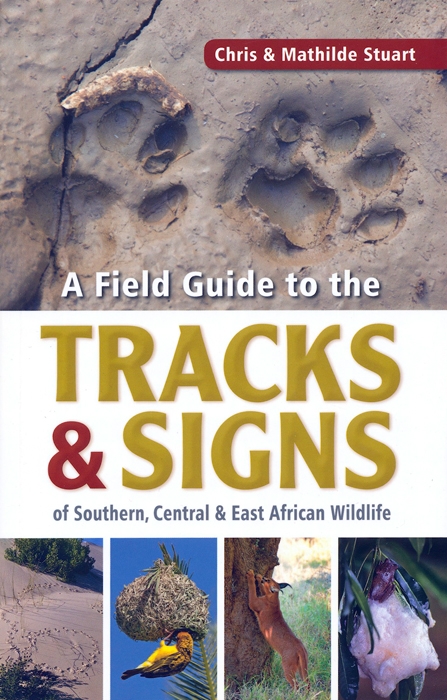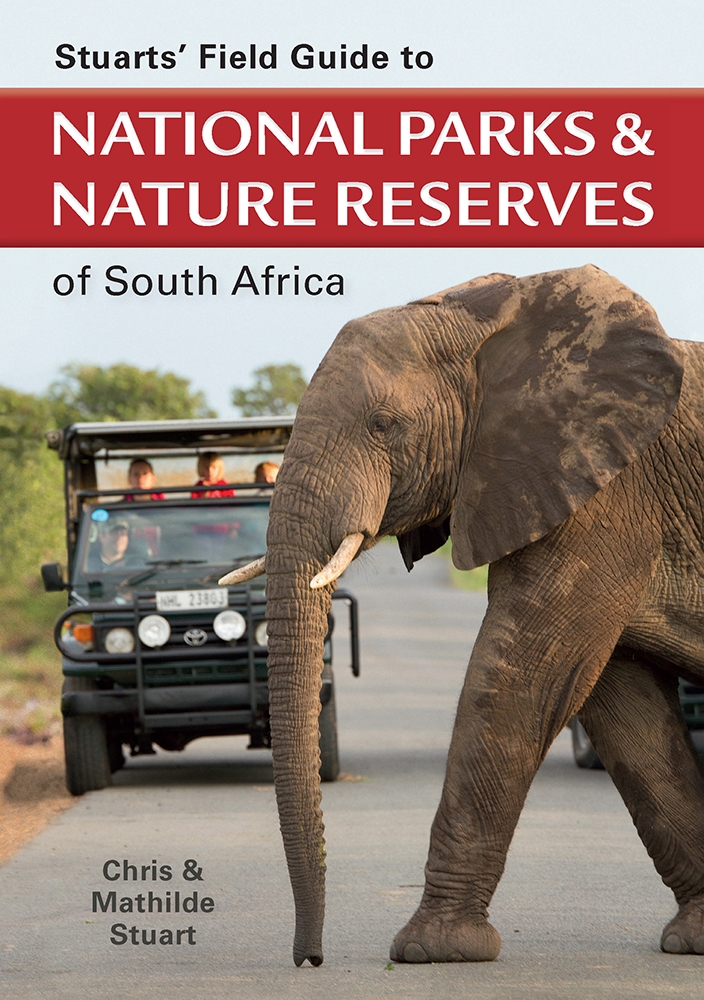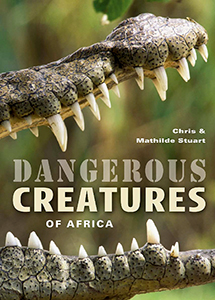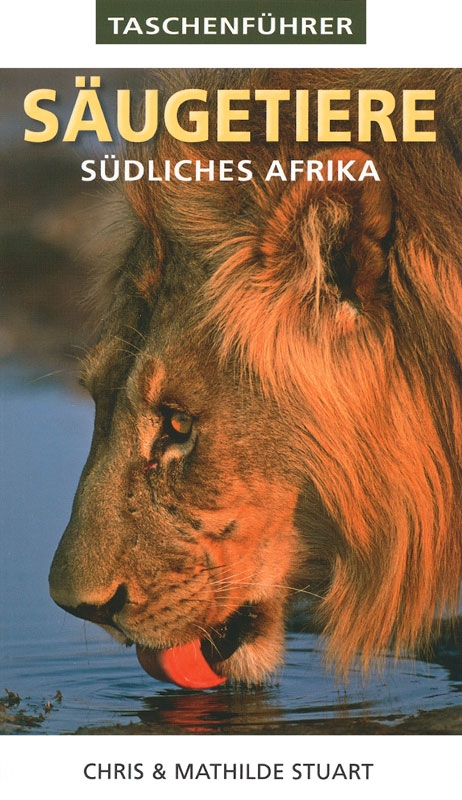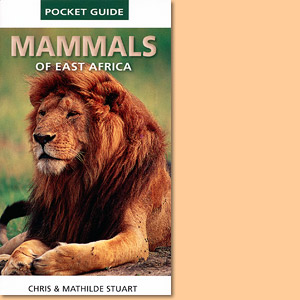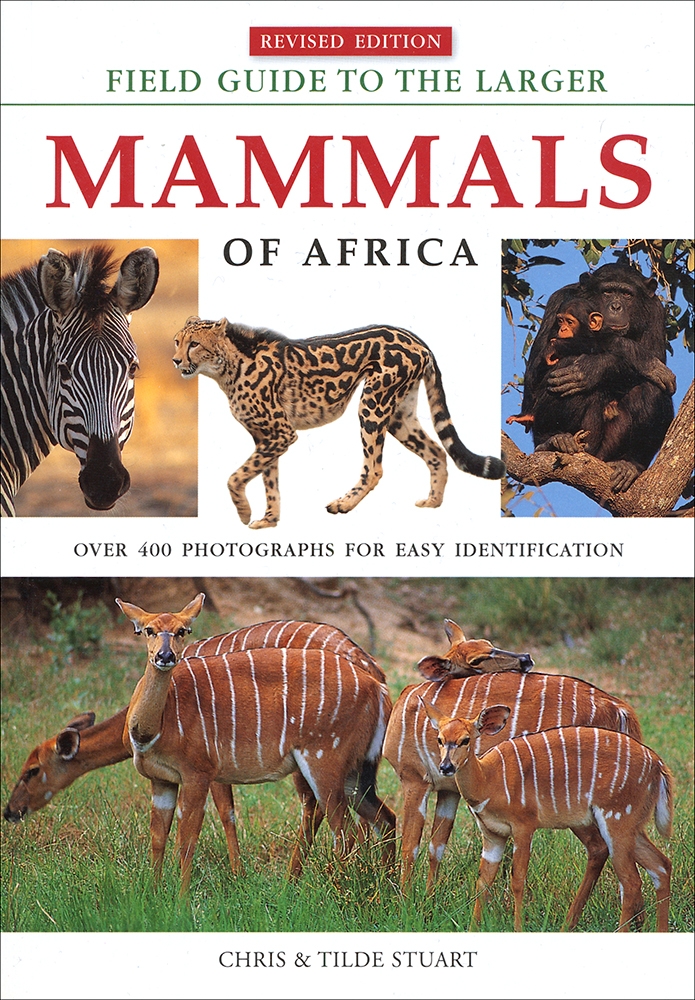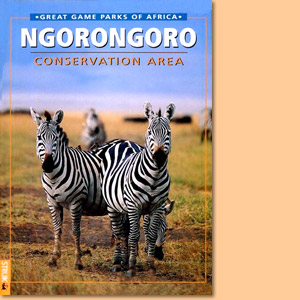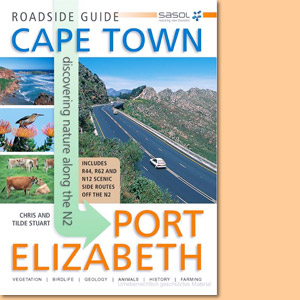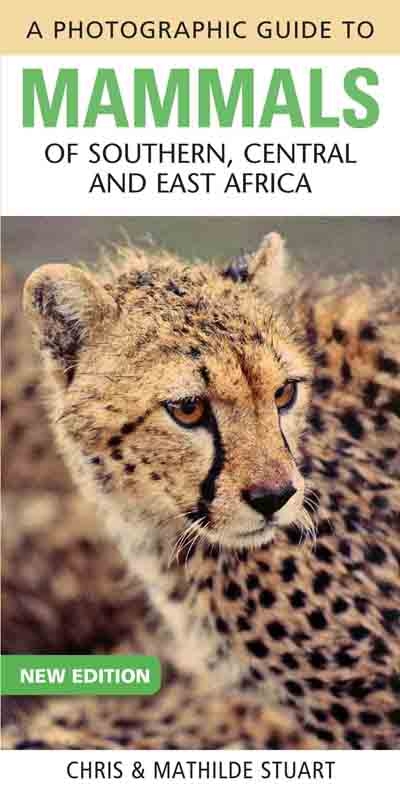Field Guide to Mammals of Southern Africa, by Chris Stuart and Tilde Stuart
Geographically, the Field Guide to Mammals of Southern Africa (Chris Stuart/Tilde Stuart) covers the area south of the Cunene River in the west and the Zambezi River in the east. The Atlantic Ocean laps the western seaboard, and the southern and eastern shores are bounded by the Indian Ocean.
Using the Field Guide to Mammals of Southern Africa
The main purpose of a field guide is to enable the observer to identify mammals in the wild. While there should be little difficulty in identifying, to species level, the larger, medium-sized and some smaller mammals, one of the difficulties facing mammal-watchers is that many species are small and secretive, and therefore only rarely seen or difficult to find. Furthermore, many small species can be identified only by specialists with access to comparative study material of skins and skulls, usually through a museum. For some small species, identification is possible normally only to family and generic level; this applies particularly to golden moles, shrews, bats and small rodents, where positive identification may require expert examination of the skull, teeth and sometimes even the chromosomes. Where this is the case, it is pointed out in the text. As the marine environment simply does not lend itself to easy observation, illustrations instead of photographs are used to depict most whales and dolphins. Each species account is divided into sections under subheadings to enable the reader to look up any aspect which is of particular interest. Take care when identifying juvenile animals, as they may differ considerably from the adults. This applies particularly to the antelopes, where the sub adults of one species may be easily confused with the adults of another species. Another thing to bear in mind is that a number of species possess one or more subspecies, or races, that differ from each other in colour, pattern or size. Where this is applicable, it is mentioned in the species account. The tools of the mammal-watcher are simple: a good pair of binoculars, a notebook and pencil, and a suitable mammal reference book.
Example: HORSESHOE BATS, Family Rhinolophidae
Horseshoe bats are characterized by having elaborate nose-leaves over the face between the mouth and forehead. Ten species have been recorded as occurring in southern Africa.
- Hildebrandt's Horseshoe Bat Rhinolophus hildebrandtii Total length 11 cm; forearm 6.5 cm; wingspan 39 cm; mass 27 g.
- Ruppell's Horseshoe Bat Rhinolophus fumigatus Total length 9.2 cm; forearm 5.0 cm; mass 14 g.
- Geoffrey's Horseshoe Bat Rhinolophus clivosus Total length 9.7 cm; forearm 5.4 cm; wingspan 32 cm; mass 17 g.
- Darling's Horseshoe Bat Rhinolophus darlingi Total length 8.5 cm; forearm 4.5 cm; mass 9 g.
- Lender's Horseshoe Bat Rhinolophus landeri Total length 8.0 cm; forearm 4.4 cm; mass 6 g.
- Peak-saddle (Blasius's) Horseshoe Bat Rhinolophus blasii Total length 7.6 cm; forearm 4.5 cm; mass 4 g.
- Cape Horseshoe Bat Rhinolophus capensis Total length 8.5 cm; forearm 4.8 cm; wingspan 30 cm.
- Bushveld Horseshoe Bat Rhinolophus simulator Total length 7.0 cm; forearm 4.3 cm; mass 8 g.
- Dent's Horseshoe Bat Rhinolophus denti Total length 7.0 cm; forearm 4.2 cm; wingspan 20 cm; mass 6 g.
- Swinny's Horseshoe Bat Rhinolophus swinnyi Total length 7.0 cm; forearm 4.3 cm; mass 7.5 g.
Identification pointers: Facial structure characteristic, with main nose-leaf base in form of horseshoe; large ears lacking tragi but with pronounced skin fold at ear-base. When at rest, wings wrap around the body.
Description: For the non-expert this is a very difficult group to identify to species level. Hildebrandt's Horseshoe Bat can be separated by its much larger size. Most species are variable in colour but Dent's Horseshoe Bat is usually pale brown or even cream above with off-white underparts and pale translucent brown wing-membranes edged with white. Swinny's Horseshoe Bat is similar in colour to Dent's Horseshoe Bat but lacks the white edging of the membranes. Another pale-coloured species is Darling's Horseshoe Bat, which has dull-grey upper-and pale-grey underparts and pale grey-brown wing-membranes. The Peak-saddle Horseshoe Bat is characterized by having long, woolly hair, which is very pale to white, with the palest area being at the back of the neck. The Bushveld Horseshoe Bat is dark brown above with contrasting greyish-white underparts. The other species have brown upperparts and usually lighter underparts. In all cases, however, careful examination of teeth, facial structures and forearm length is necessary for positive identification. Tail form is shown in fig. 1.5, page 16.
Distribution: Consult the distribution maps. Habitat: Most species are associated with savanna. All are principally cave roosters but some use dark buildings; Hildebrandt's Horseshoe Bat utilizes tree hollows.
Behaviour: Ruppell's, Lander's, Peak-saddle and Swinny's Horseshoe Bats all roost in small numbers, whereas the other species may also roost in much larger colonies. Geoffrey's and Cape Horseshoe Bats are found numbering thousands in some roosts, where they hang free by the feet singly or in well-spaced groups.
Food: Insects.
Reproduction: The young are born singly in summer.
This is an excerpt from the Field Guide to Mammals of Southern Africa, by Chris Stuart and Tilde Stuart.
Title: Field Guide to Mammals of Southern Africa
Authors: Chris Stuart,; Tilde Stuart
Publisher: Random House Struik
Imprint: Nature
Cape Town, South Africa 2007
ISBN 9781770074040 / ISBN 978-1-77007-404-0
Softcover, 15x21 cm, 308 pages, throughout colour photos
Stuart, Chris und Stuart, Tilde im Namibiana-Buchangebot
Field Guide to Mammals of Southern Africa
A total of 337 species are covered in this fully revised comprehensive field guide to mammals of Southern Africa.
Traveller's Wildlife Guide Southern Africa
Traveller's Wildlife Guide Southern Africa introduces 500 of Southern Africa’s most common amphibians, reptiles, birds, and mammals.
Stuart's Field Guide to National Parks and Game Reserves of East Africa
Stuart's Field Guide to National Parks and Game Reserves of East Africa provides an overview of some 58 protected areas across East Africa.
Stuarts’ Field Guide to the Larger Mammals of Africa
Stuarts’ Field Guide to the Larger Mammals of Africa concentrates on the more visible and easily distinguished larger species.
Stuarts' Field Guide to the Tracks & Signs of Southern, Central and East African Wildlife
Stuarts' Field Guide to the Tracks & Signs of Southern, Central and East African Wildlife, this is the 5th revised edition.
Stuarts' Field Guide to National Parks and Nature Reserves of Namibia, Botswana, Zimbabwe and Zambia
Stuarts' Field Guide to National Parks and Nature Reserves of Namibia, Botswana, Zimbabwe and Zambia.
Carnivores: Quick ID guide to Africa's predatory mammals
Carnivores: Quick ID guide is a compact and quick ID identification guide to Africa's predatory mammals.
Flying Mammals Quick ID guide to the bats of Africa
Flying Mammals Quick ID is a compact and quick ID identification guide to the bats of Africa.
Avian Architects: Quick ID guide to nests and eggs of southern African birds
Avian Architects: Quick ID is a compact and quick ID identification guide to nests and eggs of southern African birds.
Primates: Quick ID guide to Africa's great apes, true monkeys and their relatives
Primates Quick ID is a compact and quick ID identification guide to Africa's great apes, true monkeys and their relatives.
Skullduggery: Quick ID guide to southern and East African mammal skulls
Skullduggery is a compact and quick ID identification guide to skulls of southern and East African mammals.
My first book of Southern African animal tracks
My first book of Southern African Animal Tracks introduces 55 different types of animals and their footprints.
Stuarts' Field Guide to Mammals of Southern Africa
Stuart's Field Guide to Mammals of Southern Africa covers near to 400 mammal species including Angola, Zambia and Malawi since the 5th edition of 2015.
Behaviour briefs: Quick guide to southern and East African animal behaviour
Why do they do that and what next? Behaviour briefs is a quick guide to southern and East African animal behaviour.
On Track: Quick ID Guide to Southern and East African Animal Tracks
On Track is a quick identification guide to tracks of Southern and East African most commonly found mammals, reptiles, rodents, birds and insects.
A Field Guide to the Tracks & Signs of Southern, Central and East African Wildlife
Latest edition of A Field Guide to the Tracks & Signs of Southern, Central and East African Wildlife.
Stuarts' Field Guide to National Parks and Nature Reserves of South Africa
Stuarts' Field Guide to National Parks and Nature Reserves of South Africa offers a comprehensive overview of 43 parks, reserves and wilderness areas.
Dangerous creatures of Africa
The focus of Dangerous creatures of Africa is on understanding, identifying, avoiding and surviving these potential hazards of the African wilds.
Taschenführer: Säugetiere, Südliches Afrika
Der Taschenführer Säugetiere: Südliches Afrika, legt seinen Schwerpunkt auf die größeren, öfter gesehenen Tierarten, schließt allerdings auch einige ungewöhnliche Arten ein.
Mammals Of East Africa Pocket Guide
Mammals Of East Africa Pocket Guide covers all of the common and some of the less common mammal species.
Mammals of Southern Africa Pocket Guide
Authoritative and colourfully illustrated, Mammals of Southern Africa Pocket Guide offers concise information.
Field Guide to the Larger Mammals of Africa
Field Guide to the Larger Mammals of Africa provides over 400 colour photos, with concise, pertinent information highlighting the diagnostic features of each species.
Ngorongoro Conservation Area
From the series 'Great Game Parks of Africa' this is a portrait of the Ngorongoro Conservation Area.
Sasol Roadside Guide. Cape Town-Port Elizabeth: Discovering Nature Along the N2
The Sasol Roadside Guide Cape Town-Port Elizabeth: Discovering Nature Along the N2 interprets the surrounding countryside - plants, birds, mammals, reptiles, agriculture, geology.
A Photographic Guide to Mammals of Southern, Central and East Africa
A Photographic Guide to Mammals of Southern, Central and East Africa introduces 152 mammal species of each family group.
Field Guide to Tracks and Signs of Southern and East African Wildlife
Related to Southern African and East African Wildlife, this great field guide is about their tracks and signs, like droppings, feeding signs, scent marks and others.

